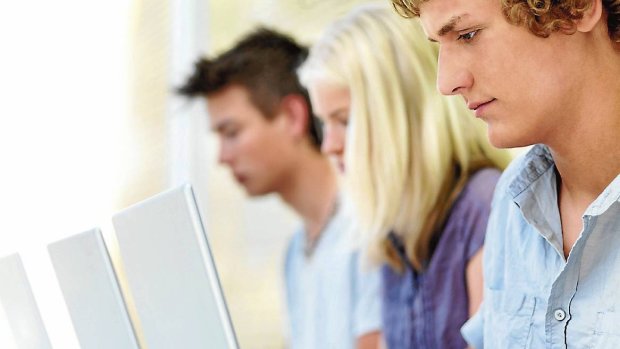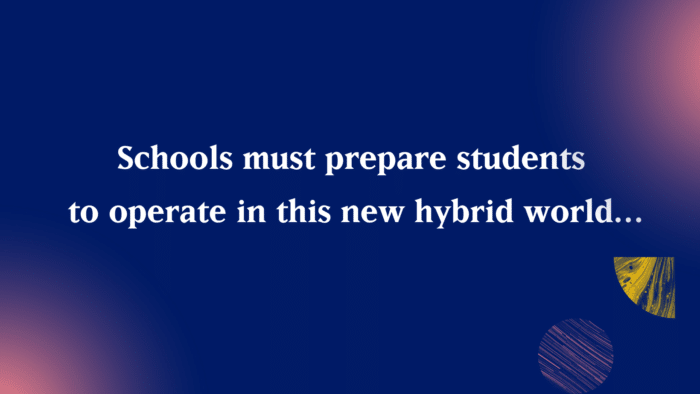In the Media: Australian Financial Review, 17 April 2021, by Alexandra Cain
Online learning quickly became the norm in the early months of the pandemic. This has produced many benefits, such as flexibility and new ways of teaching, although children without access to devices or a stable internet connection are being disadvantaged.
Nevertheless, it is likely many schools will keep those aspects of online learning that offer ongoing advantages to schools and their pupils.
According to research conducted by Victoria University, disadvantaged students who miss two terms of face-to-face teaching fall six weeks behind their peers in numeracy skills and four weeks behind in reading.
“Despite all the benefits of online learning, kids who don’t have access to technology or proper home learning environments risk being left behind,” says Christopher Hogbin, global education lead at 3PLearning, which distributes popular online learning programs such as Mathletics, Readiwriter and Reading Eggs.
“If we want to adopt online learning as a long-term solution, we need to account for this socioeconomic inequity,”
Thanks to the pandemic, online learning is becoming an entrenched part of school life. But it’s important to balance its pros and cons to support the right learning environment for children regardless of their background.
“Online learning is no longer novel. It’s an established part of the learning landscape – something teachers just have to do,” says Hogbin.


Self-directed ways of learning are continuing even after the post-lockdown return to the classroom.
“But it doesn’t have to be complex or perfect. A simple Zoom lesson can facilitate learning without the need for any other sophisticated tools and strategies; that’s a perfectly fine base to start from for most schools and classrooms,” he adds.
Online learning delivers many pluses. When kids miss a class they can watch a replay online. They can also easily collaborate on group assignments without needing to be physically in the same room.
But it also pose certain risks related to social and emotional wellbeing.
“Kids don’t just come to school just to learn, they come to be supported, cared for and to bond with teachers and peers,” says Hogbin.
“We might be able to sustain academic progress online, but it’s harder to maintain these same connections behind a screen. Online learning has enormous potential – but used improperly, it can result in impersonal, hands-off teaching that does little to engage kids.”
While many parts of society are returning to normal as the pandemic abates, learning is unlikely to go back to what it looked like pre-2020.
“COVID provided the much-needed catalyst for change in how students learn. We need to take the best of the pre-COVID world of learning and merge it with what we’ve learnt over the past 18 months to form a new and improved hybrid learning environment,” Hogbin says.
Makers Empire director of learning Mandi Dimitriadis agrees even though online learning has existed in schools for a long time, stay-at-home orders prompted widespread uptake of remote learning, and there’s no going back.
The business sells design and technology software for schools. “Online learning, and the teaching methods that support it, will remain a part of students’ school experience.”
Dimitriadis says learning is most effective when there is a partnership between school and home. “Remote learning means families have had to be more involved in their children’s learning. This has been challenging for busy parents struggling to juggle multiple demands.”
But many parents have also become more aware of how their children learn. “The COVID period allowed teachers to develop stronger relationships with their students and provide learning experiences that connect to students’ lives,” she says.
For instance, a topic such as caring for living things is more meaningful if the teacher can relate the subject matter to students’ pets, having learned about them during home schooling.
Online learning can also facilitate a change in the way teachers teach. An example is the “flipped classroom” model for remote learning.
In the more traditional way of learning, the teacher introduces new material in the classroom and then gives the kids homework to reinforce lessons at home.
In a flipped classroom, the teacher gives students new material such as a video, recorded lecture or online resources to absorb before the lesson.
Class time is then used to discuss issues arising from the new content, address students’ questions and to give individual support.
This method maximises the available time for teacher-student interaction, rather than using class time to disperse new information.
Simone Boland, dean of teaching and learning at Melbourne’s Strathcona Girls Grammar, says more self-directed ways of learning are continuing even after the post-lockdown return to the classroom.
The school has developed a combined online and offline learning program to support this.
Students can pick and choose from a range of lessons, such as interactive 15- to 20-minute tutorial sessions on topics such as effective note-taking, study and exam skills, elaborating on answers, mind mapping, and how to use Excel spreadsheets.
Masterclasses provide opportunities to further explore concepts and students can also choose to work independently or talk to a teacher when they need extra help, or to ask questions. Pupils also take part in study groups.
This all sounds great in practice. But it’s also important students who are struggling do not slip through the cracks when it comes to learning or contact with others.
“Digital technologies and independent learning will continue to play a bigger role in schools. But we can’t ignore the fact many students suffered from isolation and loneliness last year. Human connection is something we’ll always crave. While certain technologies can enable this to a degree, face-to-face contact and collaboration to foster a sense of belonging and community remains critical,” Boland says.
She says it’s also important to recognise the way teachers work has also changed, with many now working from home some of the time. Additionally, teachers now also have a responsibility to prepare students for a working world in which they divide their working time between home and office.
“Schools must prepare students to operate in this new hybrid world, where we both work independently and collaborate in person. An education that encourages students to independently grapple with problems and think creatively, while also enabling group collaboration and community learning, will provide them with the best opportunity to thrive,” Boland says.


